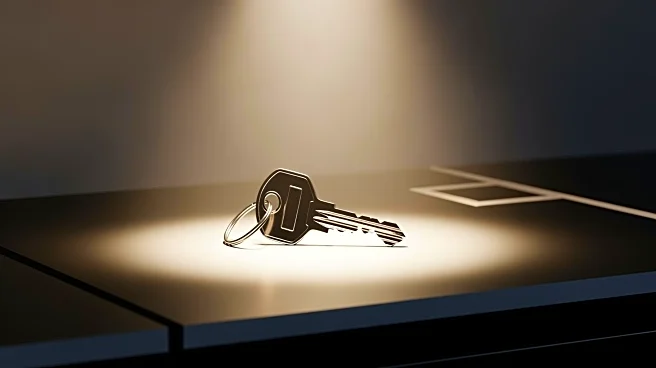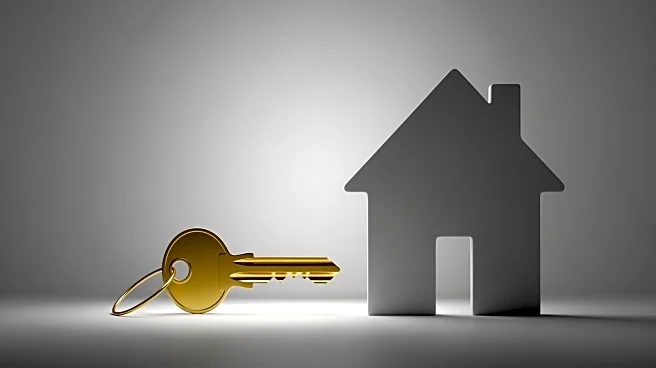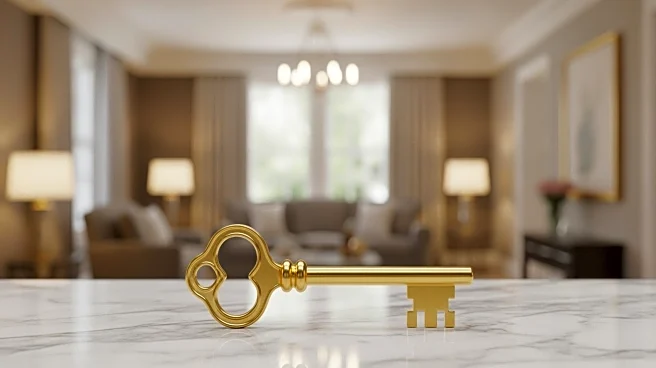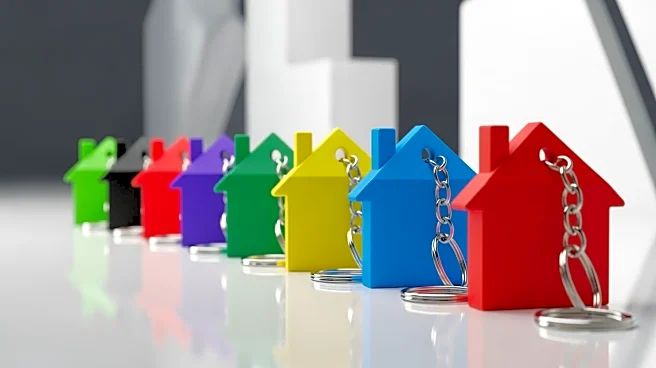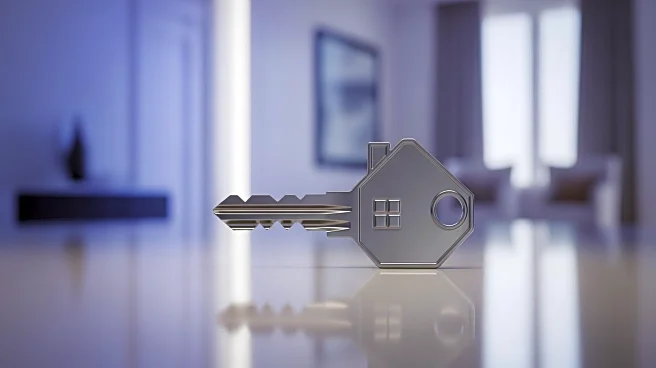What's Happening?
The average down payment for home purchases in the U.S. increased by $500 in the third quarter, maintaining a share of 14.4% of the home price. Despite a slight decrease in house prices, down payments remain elevated due to high borrowing costs and limited
inventory. Regional differences are notable, with the Northeast seeing the highest average down payment percentage at 18.2%. The Mortgage Bankers Association forecasts a slight decrease in mortgage rates, which could influence future down payment trends.
Why It's Important?
High down payment requirements continue to challenge affordability for many potential homebuyers, particularly those with lower incomes. This trend could exacerbate the concentration of homebuying among wealthier individuals, limiting access for first-time buyers. The persistent high costs may slow overall sales activity, impacting the housing market and related industries. As mortgage rates potentially decrease, there could be a shift in buyer demographics, with more diverse groups entering the market.
What's Next?
If mortgage rates continue to decline, it may lead to increased competition among buyers, potentially driving up home prices and down payments again. The housing market may see a resurgence of smaller down payments if inventory levels improve. Policymakers and industry stakeholders might explore measures to enhance affordability and accessibility, such as expanding mortgage insurance options or incentivizing new housing developments.


